#kodak junior
Explore tagged Tumblr posts
Text
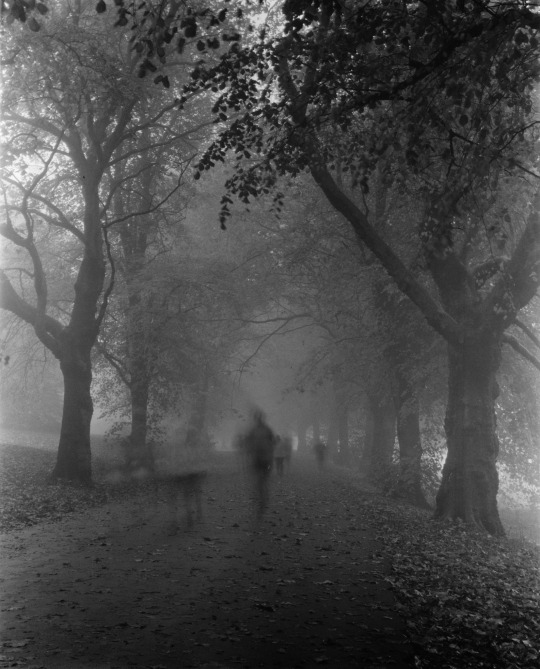
620 Kodak Junior Model D shot on Kentmere 400 developed with Rodinal
#photography#film photography#ishootfilm#vintage cameras#analog photography#filmisnotdead#nature photography#b&w photography#kodak junior#Kodak#kentmere 400#landscape photography#landscape#foggy#fog
123 notes
·
View notes
Text
shadows of the dark

matt sturniolo x reader
2 3 4 5
summary : growing up in the ‘middle of nowhere’ small town in lochcliff, colorado, stories were heard of multiple strange disappearances, murders, animal attacks, and more. when you were younger, you never paid attention to that stuff. now at the age of 17 it’s all you ever hear about. what happens when you realize those ‘stories’ you heard growing up, may not just be scary fairytales people tell their kids.
warning ⚠️ : contains mature themes, smut, gore (nothing insane), angst, etc. this warning is for all chapters.
(this does take some inspiration from tvd !)

chapter 1 : new beginning’s.
“y/n! breakfast!”
my eyes flutter open, my sleepy state slowly exiting my body as my consciousness floods through my mind. i take in a deep breath as i sit up in my bed. the sunlight from the early morning hours poking through my curtains, painting a beautiful blue and orange hue on my walls as i watch dust particles float along my room.
i look over to my wooden dresser across from me, my reflection staring back at me through the mirror above it. my pile of clothes i had chosen to wear for today the night before, picking out my outfit for my first day of my junior year.
when i was a kid, i was so excited to finally be a teenager. thinking of all the possibilities i could get. but ever since the day after i turned 16, i realized that being a teenager and growing up would be nothing but a disappointment and the little girl inside’s dreams and life was crushed that day.
“y/n! i’m not gonna yell for you again!” my mothers voice cuts through the silence of my thoughts.
“i’m coming!” i shout back as my feet make contact with the cold floor below me.
i shuffle myself to my bedroom door to shut it as i get dressed, the creepy creaking of the door making me shudder. the fact that this house is over 150 years old will never not cross my mind when i watch paranormal movies like the conjurings.
i quickly change into a tight fitted brown long sleeve shirt and a pair of baggy blue jeans, given it’s the end of august now, the early mornings and late nights are becoming a little chillier compared to the june and july nights from the beginning of summer. lastly, throwing on some black converse and grabbing my backpack filled with untouched supplies for the new school year ahead. before i leave my room i decide on throwing on just a small silver necklace with my first initial of my name on it.
i exit my room and make my way down the squeaky wooden stairs. the squeaks and creaks acting as a calling to my mom to let her know i’m coming down.
“glad to see you finally grace us with your presence.” my mother states as she flips a pancake onto a grey glass plate, holding it up for me as i enter the kitchen.
i push my lips into a thin line as i nod and take the plate from her, uttering a small thank you as i sit at the kitchen island, placing my bag on the floor beside the black stood i sit on.
“corbin, are you taking your sister to school?” i hear her ask my older brother who sits beside me.
corbin, who’s a year and a half older than me, is now a senior. he’s the most typical semi-popular guy in our school. his fluffy brown hair and dark eyes is what pulls most of the girls’s attention. he’s a jock, but he says he doesn’t “fit in” with the rest of the football team so he stays more to himself. people know him but he doesn’t boast about his athleticism or his popularity.
he takes a sip of his orange juice before answering, “yeah i can. you ready?” he questions me.
i take one last bite of my pancake as i nod, standing up to grab my backpack. i swing it over my shoulder and walk over to the front door. “bye mom, love you.” i yell as i head out the door. i hear my brother telling her his goodbyes as i stroll to his car, opening the passenger seat door.
i watch him climb into the driver’s seat before he turns the radio on, immediately connecting it to his phone playing ‘tunnel vision’ by kodak black.
he turns his head to look both ways before pulling out of our rocky driveway. i turn to look at our house as i watch it fade into the distance. “so, you ready for junior year?”
“uh, yeah. what about you? are you ready for senior year?” i ask him in response.
he nods his head almost immediately. “oh yeah. i’m so ready to graduate and finally get out of this dumbass town.”
“agreed.” i speak as i lean back into seat.
silence takes over us as we continue the ride with the songs of my brothers choice fading to the back of my mind. the morning sky now being covered in a gloomy grey cast. the dead leaves ascending from the trees creating an orange blanket across the roads and sidewalks.
the car comes to a halt as we sit at a red light, i look around taking in notice of the beautiful scenery around us. historic buildings and parks flooding my eye-line, kids and teenagers on their way to the start of their new school years.
once the red light turns to green, we begin on our way again. i look back to my right, looking out the window, watching the trees and buildings pass by in a blur. i take notice of a guy walking with his headphones in, and his back turned to us, seemingly on the same route as we are. once we get closer to him to the point i can see his side profile coming into view, i watch him turn his head to look at the car coming beside him. the second he turns his view to the car, we lock eyes.
it’s almost as if time itself has changed, slowed down. i question myself on if i’ve ever seen him before but his face doesn’t ring any bells. he’s pale with icy blue eyes. a jaw that’s so sharp it looks like it could slice your finger open with even the softest and lightest touch. a stare so prominent and hypnotizing i almost forget my whole existence until he fades out of view.
i quickly turn myself to face in front of me. my eyebrows furrow as i try to understand what just happened to me and if it even happened. it felt like i entered a dream-like state while being fully awake.
“we’re here.” i hear corbin’s voice cut through the voice in my head as i feel the car come to a complete standstill.
i rapidly blinked my eyes as i see the high school building standing before me. not even realizing we were already at the school.
“you gonna get out or what?”
i quickly nod my head as i unbuckle my seatbelt and climb out of the car. i make my way towards the school alongside my brother. the sounds of students chattering among themselves as they walk into the building all around us.
“hey, junior year isn’t that bad. just keep your head up and you’ll be fine. i’ll see you after school.” corbin speaks to me as he parts from me to find his group of friends whom always meet up in the gym every morning, it’s been a routine of theirs since 7th grade.
i make my way to my locker, putting in the combination i wrote down on my notes app from the school’s letter they mail every student at the end of summer. the piece of paper giving them their class schedule, locker number and combination, etc.
“y/n!” i hear my best friend jayde’s voice through the loud obnoxious students at 8 am.
i turn around, flashing her a smile as i watch her come up to me. “hey jayde!”
“hey! i’m sorry we couldn’t hang out any this summer. what’s your schedule? maybe we have some classes together!” she says as she wraps me in a warm embrace.
jayde is very passionate about music and all of that. so the second our school announced that there would be a music and arts camp, she was the first to have her signature on the sign up sheet.
“no it’s okay and let me check.” i grab my class schedule out of my back pocket before i read off my classes, “first period is language arts, then history, math, then my free period, reading, gym, and science.”
she takes out her own schedule as she tries to match up any classes we may have together.
“ooo! okay! we have history, gym and our free period together!” she say enthusiastically.
as soon as i’m about to respond, the school bell cuts me off. the loud blaring shooting a pain through my mind reminding me of how much i despise school.
“okay well i’ll see you second period!” she struts off into the crowd of people, her long black hair bouncing with every step she takes.
i begin my own way to the room i’ll be entering at 8:10am every day on the dot for the next 9 months of my life.
the second i enter the classroom, my already present headache worsens with how painfully loud everyone is. different conversations and pencils being tapped on the wooden desks.
i walk to a free desk in the second row of the seat’s layout. the placement being in pretty much the middle of the classroom where i’m fully submerged by the persistent voices of students. as i sit down i stare off into the distance i wish i was back in my bed already.

a/n : i’m so excited to start this series! i started watching tvd again and it brought me inspiration to write this. plus vampire!matt is so fucking hot. anyways lmk if i should make a taglist or anything or if yall fw this and want me to keep going ! :)
#matt sturniolo#matt sturniolo x reader#matt sturniolo smut#vampire au#sturniolo#sturniolo triplets#sturniolo x reader#sturniolo fanfic#sturniolo smut#chris sturniolo#nick sturniolo#christopher sturniolo#nicolas sturniolo#sturniolo fic#vampire!matt#chris sturniolo smut#matt sturniolo angst#matt sturniolo au#matt sturniolo x you#matthew bernard sturniolo#matt x reader#chris sturniolo au#chris sturniolo headcanon#sturniolo headcanon#lol#chris sturniolo texts#matt sturniolo texts
112 notes
·
View notes
Text
So Jonathan has his own Kodak—a camera aimed at hobby photographers, but still quite expensive.* He must have been really interested in photography! I wonder if he saved up for it or perhaps got it as a present from Mr. Hawkins…
I found this website with information about all the different Kodak cameras from this period and after! Depending on the year the book takes place, he would have had one of the very earliest models (perhaps a Daylight), or he could have had the popular Pocket Kodak from 1895.**
* According to this currency converter, the $6 price would be $210 now. I tried figuring out what it would be in pounds, which I’m not sure went well, but here are my calculations anyway… The exchange rate at the end of the 20th century was close to $5 to £1 so 6/5=1.2. 20 shillings to a pound means that’s 1 pound 4 shillings. According to this converter, that would be £98.48 in 2017, and 3 days wages as a skilled tradesman in 1890; as a solicitor’s clerk, Jonathan’s might have been lower. “Junior clerks and apprentices wages ranged from £20 - £25 year and progressed upward to approximately £70 - £80. At best, they fared just slightly better than a skilled craftsman.” Did I put too much work in this? No, what are you talking about. I enjoyed going down this rabbit hole.
** After seeing some discussions about the year the book could take place in, I’m convinced of 1894 (this lines up best with the dates that have weekdays attached to them and, if I remember correctly, with some of the technologies mentioned). You might also pick 1897, the year the book was published, or—mild spoilers—1890 to take the 7 Years Later epilogue into account. Or you could pick any other year between 1890 and 1897 just because. In the end, they’re all just headcanons and I only really care about the exact year for fanfic purposes. Really, the book is not set in any specific year at all—but definitely very solidly in the 1890s.
42 notes
·
View notes
Text

May 1992. Kuhmo, Finland. Olympus Trip Junior, Kodak Gold Plus 200 film.
9 notes
·
View notes
Text

Kodak Junior 620 folding camera, 1935-39.
98 notes
·
View notes
Text
Artist Statement (Story)
Back when I was younger, my parents and I had a Kodak camera where we used to take photos on special occasions, birthday parties, and even special events. I had too much fun taking photos with it making silly moments and eventually videos from school musicals, and orchestra events.
I was in high school in my Sophomore and Junior years when I first took Photography and I didn't have a top-of-the-line or DSLR camera to get started, so I used an old tablet or my phone to take photos and I had to upload to an online drive (such as my school Google Drive) to download on a computer and practice editing on Photoshop. I didn’t know how to take apertures, or adjust shutter speeds and it was just a beginning in my photography life. In high school, I learned different photography compositions like negative space, rule of thirds, leading lines, and forced perspective, it was a little struggling with forced perspectives because sometimes I couldn’t get it perfect for my teacher but no one’s perfect in photography.
Between junior photography to intro to photography, I took pictures on my new phones and the colors have improved due to the quality and effects on my phone and mostly, it’s the shapes of the clouds in the sky and the colors. You could think of it as a hallucination but mostly, they’re real in different occasions if we see clearly.
And here came the 2025 spring semester, it was when I started intro to photography. I still didn’t have a camera for class and I needed one to pass. I couldn’t just use my phone to take pictures because I needed a camera to change the settings for best shots. So, I met with Laura Hurcomb in person to get information and invited my mom to talk with her so that we can get as much info we needed to get the right camera for the class. Over the weekend, we went camera searching until we went to a Best Buy and got a Canon EOS Rebel T7. I was angry with the price because a lot of DSLR cameras are expensive, especially before the school semesters start. I went to not only set up but did some test shots and sent a photo of the camera to Laura for approval. After some tests and patience, she accepted the camera for photography.
Throughout class, I learned so many different aspects including more compositions, taking photos on a film camera and printing them in a darkroom, and especially learning to use the aperture more. In one photo album, I called myself Aperture Girl because of the adjustments and fun. I had the most fun taking photos on a film camera and developing film even when I couldn’t see myself in the darkroom reeling film in a tank because if a film is reeled in the tank in the light, it gets exposed and it’s not great. So, if we want to see a film, we use chemistry. I did two tries on the film because my first try wasn’t great. And my first mistake was when I accidently rolled the film back in the canister and it was a struggle getting it out. Not only a film was exposed but the camera wasn’t in good shape. So, I tried again the second time and succeeded. And in another darkroom, I learned how to print my photos, but had several failed shots and suddenly, after a lot of learning, I realized my mistakes: it wasn’t the developer, it was me adjusting the photo on the paper which made the image go pitch black. Finally, I fixed my mistake and came up with clear images; not only I had fun in photography, but also made friends and I was really happy to keep learning photography outside class that I would love to become a photographer in the future.
Alana Anderson
3 notes
·
View notes
Text
"It was his fans who defined the word 'devotion' and it was Elvis who was propagating the faith."
— Alfred Wertheimer about Elvis interactions with his fans in the 50s.
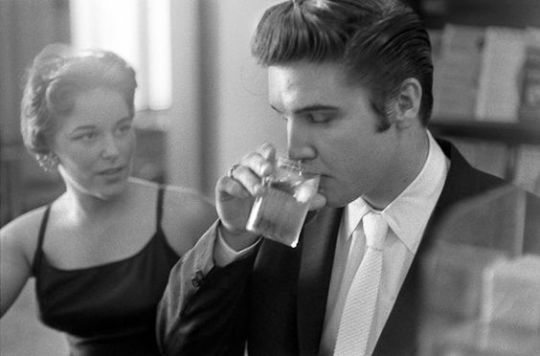


June 30, 1956: Elvis and Barbara Gray (Elvis' date that day and the girl immortalized in a photograph with him in what would be known as one of Elvis' most iconic and sexy portraits by Alfred Wertheimer, shoot that same day, a portrait known today as 'The Kiss'). On the first picture they were at Jefferson's hotel restaurant, and in the second picture they were with Elvis' cousin, Junior Smith, inside a cab on their way to the Mosque Theatre in Richmond, VA, where Elvis would perform in a few moments. Alfred Wertheimer's recollections of this moment:
"The cab drove up Main Street, drifting through the still heat until it landed at the rear of the Mosque Theatre. I had expected Elvis to march directly up the backstage ramp, — it was only twenty minutes to show time, — but, instead, he laid back and held court with the few young ladies who had gathered, all primly dressed in their Sunday best and ready with their Brownie cameras. For someone who was moving up pretty fast he never seemed to be in a rush. He always had time for the fans. The blond in the black chemise (Barbara Grey, Elvis' date) and Junior stepped aside. "Elvis, can my girlfriend take a picture of you and me?" asked one of the young ladies. "Sure, honey." "Elvis, are you going to sing 'Heartbreak Hotel?'" "Maybe. Are you gonna watch me tomorrow night on television?" "Oh, yes." Elvis was not a celebrity who had some vague love of the people or a star who, with a wave of hands, would acknowledge some generalized gratitude for all who had made this possible. He was specific, giving his attention to each, as the Pope gives a personal audience. It was his fans who defined the word "devotion" and it was Elvis who was propagating the faith. He may not have known what he had but it was clear they knew he had it. I was still trying to find out what "it" was.
Excerpt from "Elvis '56: In The Beginning" by Alfred Wertheimer
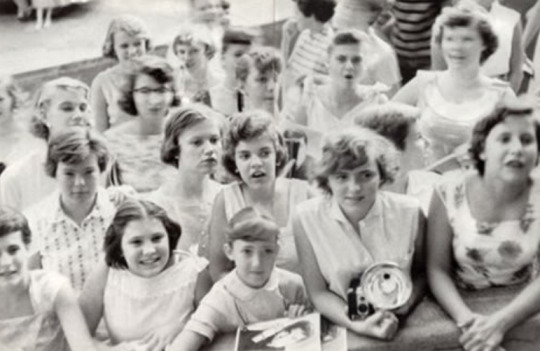
Fans backstage at the Mosque Theatre, Richmond, Virginia - Some with their Brownie Kodak cameras, as mentioned by Mr. Wertheimer. June 30, 1956. © Alfred Wertheimer.
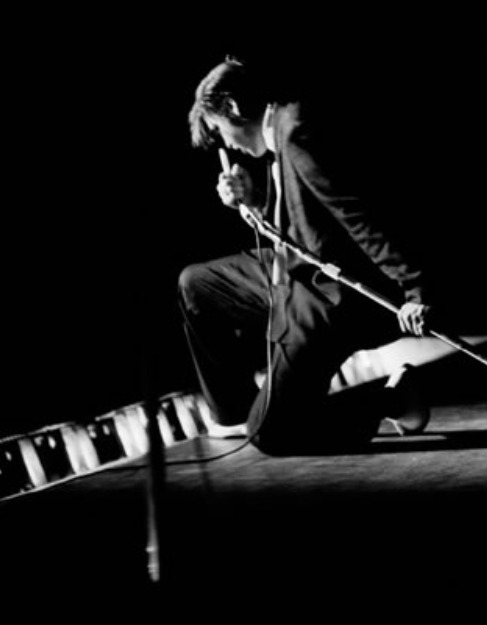
Elvis onstage at the Mosque Theatre, Richmond, Virginia on June 30, 1956. Photo by © Alfred Wertheimer.
#i bow to you my king 👑#EP you'll never be forgotten#your love for your fans was so generous and everlasting is reverberates through time... we can feel it even today#this guy has my heart and my endless respect#thank you for everything you make us feel even tho most of us didn't even got to see you not even once#i'll never get tired of spreading to the four winds how loving and caring elvis presley was 🥹#elvis the king#elvis presley#elvis and his fans#elvis fans#elvis fandom#icon#the king of rock and roll#the king of hearts#the king of the entire universe#best performer ever#rock and roll history#again... thank you God for Elvis Presley
45 notes
·
View notes
Text
Round 1 of 8, Group 4 of 8


propaganda and summaries are under the cut (May include spoilers)
Centaurworld: 2.08 The Last Lullaby
Horse leaps into the Nowhere King's mind and learns his haunting backstory. Meanwhile, Rider and the herd come up with a plan.
This single episode packs in a Massive soap opera level drama of love and betrayal that ultimately severed two connected worlds, plunging one into war and the other into ignorance. All while singing Amazing songs
Mad Men: 1.13 The Wheel
Don and Betty Draper have an argument when it becomes apparent that he doesn't want to spend Thanksgiving with her family and she plans on going only with the children. He also learns some information about his brother Adam. Pete Campbell confirms that he has landed an account from his father-in-law for a new skin care product called Clearasil. He objects however when Don gives the account to Peggy Olson, whom he has just promoted to junior copywriter. Peggy proves her mettle in auditions for the weight loss device but later is feeling unwell and goes to the hospital where she is given some shocking news. Don comes up with a brilliant presentation for Kodak on a new wheel-like storage device for a slide projector that he dubs The Carousel.
it may be from the first season, don's final pitch for the kodak carousel is one of the most remembered pitches on one of the most acclaimed tv shows of its time. mad men is also one of the most tv shows of all time thanks to its constant commentary on the effects advertising and media have on our lives. it serves as excellent commentary on how capitalism has refined advertising to become our new american mythos, as well as meta-commentary on what tv shows like mad men self-consciously mythologize what many remember as "the good old days" of the united states.
12 notes
·
View notes
Text
Not the best team, but the fittest Here’s how extreme heat could steal FIFA World Cup 2026
The sweltering and much-awaited FIFA World Cup 2026, hosted in the United States, Canada, and Mexico, is already getting people worried—and not just due to the increased 48-team format. More and more, experts and players are warning against an entirely different type of threat: the climate. Unprecedented heatwaves and regular summer storms may well prove to be the decisive elements in determining who makes it deep into the tournament.

There are strong indications that the FIFA World Cup would not be taken by the best team—by the best-fit, best-facility team capable of coping with the situation. In the United States, where the majority of the matches are to be held, prevailing weather conditions are a source of worry. Heat in big cities has been reaching alarming heights. In Cincinnati, Borussia Dortmund had to keep their substitutes in the dressing room instead of on the sunbaked bench when they played Melody Sundown. In Philadelphia.
Chelsea team head coach Enzo Mar esca curtailed his team’s training in view of the scorching heat, as temperatures reached 37.2°C.Dortmund head coach Niko Kodak was pre-emptive in making the increasing sentiment among coaches when he said, “This tournament is not going to be won by the best team, but by the team that can manage in these conditions best.” What a quote for a tournament as large as the Football World Cup 2026.
Heat and Storms Pose Major Challenges for Football World Cup 2026
The policies aren’t draconian-sounding, but they’re scientifically-backed. A recent study in the International Journal of Biometeorology matched climate data from 2003-2022 and reported that 14 of the 16 host cities chosen to organize the FIFA World Cup 2026 had consistently higher temperatures above safe temperatures on the Wet Bulb Globe Temperature (WBGT) scale—a primary indicator to measure heat stress on human bodies.

Thus, the researchers extended an invitation to FIFA to reschedule its games away from noon when temperature and humidity are hazardous. But with such a packed roster and games shared across three nations, rescheduling might not be possible. The FIFA 2026 calendar itself is a complex puzzle, and shifting matches might have broadcast and logistical ramifications.
On top of the heat problems, another increasing problem is thunderstorms. During the Club World Cup, numerous games were postponed or cancelled outright as a result of lightning danger. Boca Juniors’ match against Auckland City was postponed under U.S. public safety procedures that halt play at any time when lightning is observed anywhere within 16.1 kilometers of the stadium, for instance. Benefice’s match with Auckland was postponed by two hours on account of the same conditions.
FIFA 2026 Weather Prep, Tech Advances, and Safety Measures in Focus
According to Ben Schott from the U.S. National Weather Service, these weather patterns are not anomalies. Schott is one of the advisors working with FIFA and the U.S. World Cup Taskforce for FIFA World Cup 2026. “What we’re seeing now is not unusual,” Schott stated. “Really, it’s not unusual for this time of year in most parts of the U.S.” He added that heatwaves and thunderstorms in the afternoon are likely to occur during the summer season, particularly due to the moisture pulled in from the Gulf of Mexico.

There is one silver lining to it all: technological advancement. Schott pointed out that the forecasting ability of meteorology today is light years ahead of when the United States last welcomed the FIFA World Cup in 1994. “Now we can forecast almost a week in advance and that makes us able to plan for safety in a way we were not 30 years ago,” he observed. Nevertheless, it is obvious that teams as well as fans must be ready. For athletes, it’s no longer performance training—it’s survival training.
In a statement, the group assured the public that they are closely cooperating with weather specialists and stadium managers. Training like the provision of cooling breaks, more hydration points in addition to the usual ones, and the permission for up to six substitutes in games extending into extra time has been implemented to assist players with the heat.
FIFA World Cup 2026 A True Test of Skill, Endurance, and Climate Resilience
But the test will still be tough. In comparison with tournaments staged in cold weather or temperate conditions, the FIFA World Cup 2026 will be subjected to the brunt of summer in North America. With 104 games and tens of thousands of spectators flooding into each city, the toll on resources—particularly medical and emergency responders—could be overwhelming if the weather becomes severe. For others, the new reality between sports and climate change is one that cannot be ignored anymore.

It will be an in-the-moment test of human resolve against the growing untrustworthiness of nature. The globe will be looking not just for trophies and triumphs but for teams’ ability to overcome the heat and storms that characterize this new age of sport. The Football World Cup is, and remains, the beautiful game, but in 2026 it could also be the hard one.
Experience the passion, drama, and glory of the Football World Cup 2026 live! With gettickets365, it’s easier than ever to buy FIFA World Cup Tickets, including premium access to FIFA World Cup Final Tickets and Football World Cup Final Tickets. Don’t wait, secure your World Cup Tickets now and cheer for your team on the biggest stage in football
0 notes
Video
vimeo
mercedes-benz 'ONE OF MANY' for international women's day from Andreas Bjørseth on Vimeo.
directed by FIONA JANE BURGESS cinematographer ANDREAS BJØRSETH producer EMELY ASHLEY SUDHAUS ep VERA PORTZ client MERCEDES BENZ agency ANTONI partner & managing executive director MARCELL FRANCKE head of production MARJORIE JORROT copywriter LEONIE HALLET ad LAURA HESS managing director CHRISTINA MÜLLER senior account manager: JULIAN HOLLAND-MORITZ junior account manager SARAH ACHATZ agency producer MEIKE KORNRUMPF actors REEMA JUFFALI / JOHANNA MERCIA WEIß / ADI OFEK /NANDI BUSHELL / TALLULAH LEGGETT / AMAYA CHRISTA / ALICIA POPE / JOSEPHIN KUHN / DAMIR MAHOMEDOV / THEODOR SOSTARIC / LION DZHONG / LION_DZHONG / RENZO MOYSE / ALIYAH PANKOW assistant producer EVA KUHAR assistant producer ARTEMIS KRULL research team LILIAN TIETJEN / LILLI SEIDEL & DANIELA EICHELT editor NIK KOHLER colorist JULIEN ALARY 1st ad GREGOR BUDDE-PETRUSCH pm MARC DROBNY steadicam YOSHUA BERKOWITZ 1st ac OLA AUSTAD 2nd ac SIMON WANDELT vtr FRANK HELLWIG gaffer BENJAMIN ERDENBERGER key grip HANNES TRÖGER production design LILO KLINKENBERG & LÉONIE BRITZ styling JULIA QUANTE make up artist PALOMA BRYTSCHA hairstylist RABEA RICHWIEN social media COMPRESSED photography JANINE SAMETZKY casting KYRA SOPHIE casting HANNAH ASHBY WARD extras STREETS AGENTUR sound design / music KRAATZ STUDIOS // SOUNDTREE film lab STUDIO L’EQUIPE shot on kodak 35mm
0 notes
Text

Had another charity shop find, a 620 Kodak Junior.
Seems to be in working order and no obvious light leaks in the bellows, unfortunately 620 film is discontinued. Fortunately however, the only difference between 620 and 120 film is the spool it’s wound upon. Got some 620 spools ordered and when they arrive I’ll be attempting to respool some 120 stock onto them. Should be interesting, never had a camera that shoots 6x9 frames before.
Stay tuned!
#photography#film photography#ishootfilm#vintage cameras#analog photography#filmisnotdead#kodak#kodak junior#620 film#medium format#120 film
53 notes
·
View notes
Text
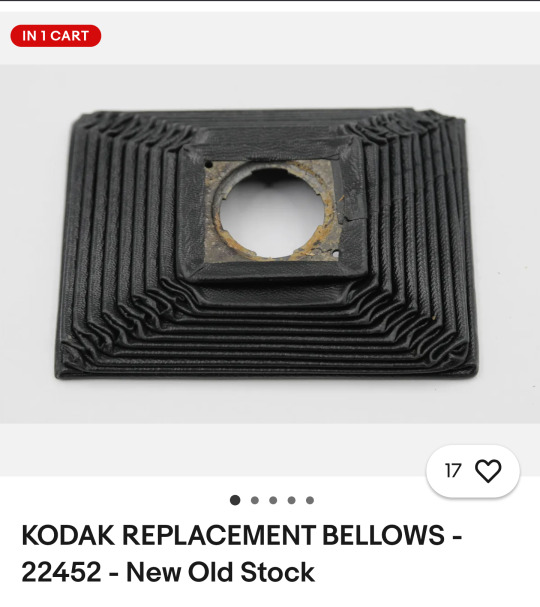
What I bought to fix one of my old ass folding cameras. I'm really hoping its not all fucked up lol being that it's new old stock. I may not be able to replace it myself cuz there's two rivets in the front behind the lens and I don't have anything to drill it out and replece those little rivets. I hope the camera shop doesn't charge me too much. I want to see how the camera takes pictures!

The Kodak Junior 2.

The damage. I guess I could go with custom made bellows. It would cost more but it would be with new material and may last longer than the new old stock stuff. But I don't have any thing to unbend some little tabs that hold the bellows down.
0 notes
Text

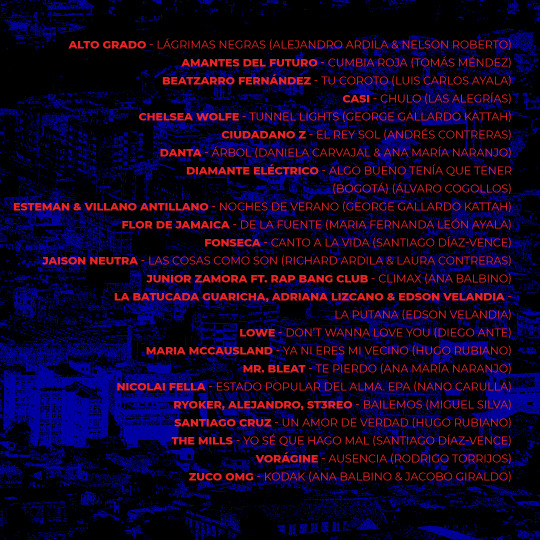
// Bogotá Music Video Festival // Selección Oficial 2024 // Competencia Nacional Alto Grado - Lágrimas Negras (Alejandro Ardila & Nelson Roberto) Amantes del Futuro - Cumbia Roja (Tomás Méndez) Beatzarro Fernández - Tu Coroto (Luis Carlos Ayala) Casi - Chulo (Las Alegrías) Chelsea Wolfe - Tunnel Lights (George Gallardo Kattah) Ciudadano Z - El Rey Sol (Andrés Contreras) Danta - Árbol (Daniela Carvajal & Ana María Naranjo) Diamante Eléctrico - Algo Bueno Tenía Que Tener (Bogotá) (Álvaro Cogollos) Esteman & Villano Antillano - Noches de Verano (George Gallardo Kattah) Flor de Jamaica - De La Fuente (Maria Fernanda León Ayala) Fonseca - Canto A La Vida (Santiago Díaz-Vence) Jaison Neutra - Las Cosas Como Son (Richard Ardila & Laura Contreras) Junior Zamora ft. Rap Bang Club - CLIMAX (Ana Balbino) La Batucada Guaricha, Adriana Lizcano & Edson Velandia - La Putana (Edson Velandia) Lowe - Don’t Wanna Love You (Diego Ante) Maria McCausland - Ya ni eres mi vecino (Hugo Rubiano) Mr. Bleat - Te Pierdo (Ana María Naranjo) Nicolai Fella - Estado Popular del Alma. EPA (Nano Carulla) RYOKER, Alejandro, ST3REO - Bailemos (Miguel Silva) Santiago Cruz - Un Amor De Verdad (Hugo Rubiano) The Mills - Yo Sé Que Hago Mal (Santiago Díaz-Vence) Vorágine - Ausencia (Rodrigo Torrijos) Zuco OMG - Kodak (Ana Balbino & Jacobo Giraldo)
1 note
·
View note
Text
Kodak Vigilant Junior Six-16 camera

#etsy#etsyshop#ourtimewarp#etsyvintage#etsyseller#etsystore#vintage#etsyvintageshop#kodak#filmcamera
0 notes
Text

Early 2000. Kuhmo, Finland. Olympus Trip Junior, Kodak Gold 400 film.
Ready to depart Kuhmo bus station.
15 notes
·
View notes

